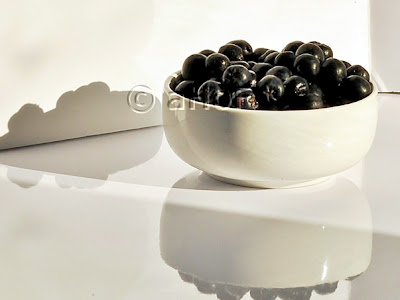 |
| a small bowl of Aronia Berries |
Aronia berries can come in red, purple or black varieties, though the ones I was given are definitely on the blackish side. The berries are sometimes called choke berries but this is confusing because there are also fruits called choke cherries, a completely different plant. The word "choke" preceding these berry names is not just given for nothing! Choke cherries and these Aronia / choke berries are highly astringent. Of course, anything really astringent, puckery-tart like these fruits also generally means they are really good for you. They do not cause you to choke, but tart, oh yes they are!
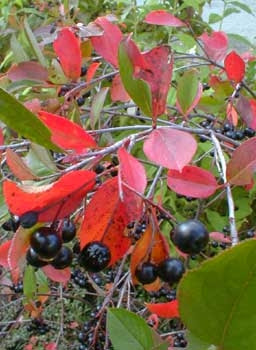 |
| Berries and Fall foliage: http://www.paghat.com/berries1.html |
Aronia melanocarpa is one of the scientific names given to the aronia berry, but there is some confusion here. Suffice to say that they are also called Photinia melanocarpa and it gets confusing from there. The fruit of course is high in antioxidants; in fact higher than blueberries and cranberries. There are studies being done on all the health benefits, and these berries are being called yet another "super-fruit", with claims they may help prevent cancer, diabetes, help with macular degeneration, alzheimer's and a host of other ailments and illnesses. These bushes can grow wild, and actually have not been cultivated on a grand scale in the US. What is being done with them has been leaning toward juices, and blends with other fruits, blueberry or apple being the most common. There is some research being done on adding them to grapes for wine, as the skins are so deep purple and the fruit itself lends well to this application. Aronia wine recipes are all around the internet.
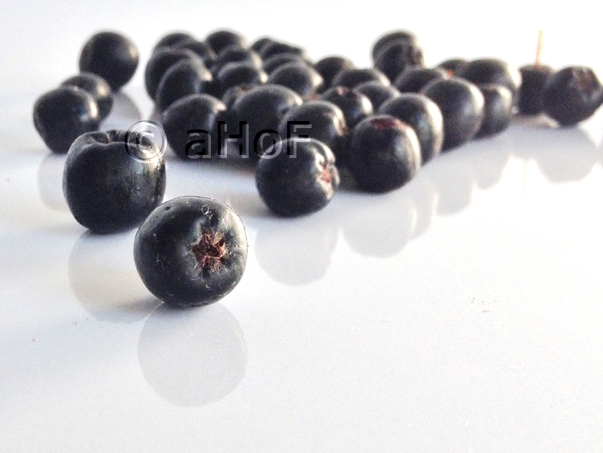 |
| Closeup of Aronia berries or Black Chokeberries |
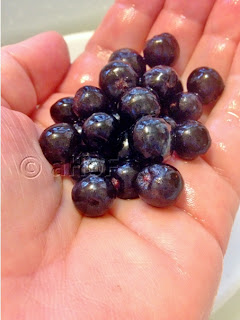 |
| Size of the berries in my hand |
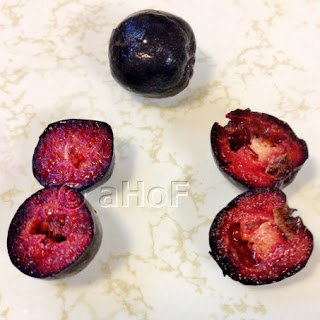 |
| Fruit cut across (left) and vertically (right) |
I have yet to actually do anything with these berries, although I am preparing ideas. I looked up recipes last evening and most say the berries are more tolerable once they've been frozen, or left to go through a couple of frosts before picking. Others say they are better if cooked. Or frozen, then cooked. I am hoping to make a little syrup and a little jam or preserves. In all, I have 3 pounds of berries to work with. More info on recipes will be forthcoming once I have worked with them. For now I have washed them and set them out on trays to freeze. Once solid, I will pack them into appropriate amounts in freezer zip-top bags. Freezing them on the trays will allow the individual berries to be separated out for use when that time comes.
My passion is teaching people how to create a harmony of flavors with their cooking, and passing along my love and joy of food, both simple or exotic, plain or fancy. I continue my journey in ethnic and domestic cuisines, continuing my journey to explore diverse culinary experiences and hopefully to start you on a journey of your own. Join me also at A Harmony of Flavors on Facebook, and Pinterest.

No comments:
Post a Comment